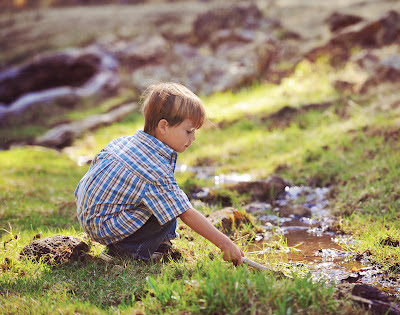So the leisure days of summer are over. That does not mean,
however, that our time outdoors should come to an end. On the contrary, if you
have children who are naturally curious and full of questions about the world
around them, there is no better way to teach them about the environment and
science than a walk in the woods or a trip to the zoo. It’s also a great way to
spend some quality time with the family.
“Hands-on experiences help kids of all ages grasp concepts and
retain information,” according to a report by TruGreen, creators of
MyBotanicalPlanet.com, a free website with lesson plans and interactive games
for students in grades K-5 who want to explore basic botany and water
conservation. The site features lesson plans that are designed to be fun and
educational. However, it’s something you might want to do after a trip outdoors
or in the case of rain.
If you’re looking for ideas that you can use to help your kids
love learning about science outdoors, here are a few suggestions from active
moms and Watershed Fred -- who is the educational character featured at
MyBotanicalPlanet.com.
Plan a field trip.
Pack a snack of gummy frogs or a hearty sandwich and embark on
a journey. It can be a short trip or an all-day adventure and do not let the
threat of rain stop you. Instead, don your raincoat and rubber boots and carry
on.
Explore your backyard.
Who said you have to drive to your destination? Check out your
own backyard or nearby woodlands. I used to love collecting leaf samples that I
later used for projects like a collage. Consider packing a magnifying glass so
you can do some serious research: Examining bugs, plant stems, tree bark and
spider webs. Watershed Fred suggests having your child give an explorer’s
report on what he or she finds.
Your home turf.
Take photographs of the different trees and bushes in the
neighborhood that you can identify later. Who knows? You might have a rare
species of tree or plant growing in your backyard. Plan a scavenger hunt at a
nearby stream or pond. Make a list of items that everyone must find like animal
tracks, water insects, birds fishing or taking a drink, frogs hopping or snakes
slithering.
Visit local attractions.
It doesn’t matter if you’ve been there before. As with life --
animals at the zoo are forever changing and growing. For some families it is an
annual visit, even monthly. If you want to make it different before you go,
have your child check out some library books about one or two of their favorite
animals. This way they can learn some facts about those animals and be even
more excited while observing them. They might even be able to teach you
something new.
For comments or questions, email
gina.joseph@macombdaily.com.



No comments:
Post a Comment